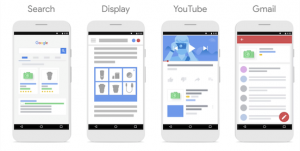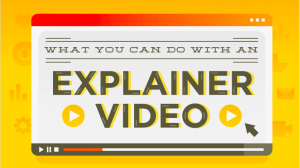TL;DR: 42 Scrum Product Owner Interview Questions That Will Benefit Your Organization
This second publication in the Hands-on Agile Fieldnotes series is focused on hiring for the Scrum Product Owner.
Co-authored with Andreea Tomoiaga, 42 Scrum Product Owner Interview Questions to Avoid Hiring Agile Imposters represents the most important learnings of our more than 20 years combined hands-on experience with Kanban, Scrum, XP, and several product discovery frameworks. We have worked as Scrum Product Owners, Scrum Masters, agile coaches, and developers in agile teams and organizations of all sizes and levels of maturity.
We have each participated in interviewing dozens of Scrum Product Owner candidates on behalf of our clients or employers. The questions and answers herein are what we have learned.
Scrum’s Product Owner Role Is Tricky to Grasp
Scrum is not a methodology, but a framework. There are no rules that apply to each and every scenario — just best practices that have worked in other organizations before. As somebody hiring for an agile team, you need to determine for yourself what works for your organization — which is a process, not a destination.
The role of the Scrum Product Owner itself makes the hiring process difficult to handle. The Scrum Product Owner is the least well-defined role within the Scrum framework and — at the same time — the role with the most facets.
Scrum Product Owners are innovators at heart and thus value creators for both their customers and their organizations — if given a chance to work in an agile manner. Theirs is the most vulnerable Scrum role. Turn a Scrum Product Owner into a (ticket-system of your choice) monkey, or deprive them of the ability to say “No” (by making someone else the gatekeeper of the product backlog), and they quickly become the Achilles’ heel of any agile organization.
The Scrum Product Owner role depends upon the size of the organization, the industry it operates in, and the lifecycle stage of its products. But most importantly, overlap with the product manager role must be considered (spoiler: they aren’t identical).
These 42 interview questions are neither suited nor intended to turn an inexperienced interviewer into an expert on agile software development. But in the hands of a seasoned practitioner, these questions will provide ample support when needing to determine who of the candidates has worked successfully in the agile trenches. Remember: “agile” is a mindset, not a methodology. No checklist will drive your recruiting success.
42 Scrum Product Owner Interview Questions to Avoid Hiring Agile Imposters provides contextual information including guidance on proper answers and instruction as to how these interview questions are best used. The questions are grouped into six sets covering the most critical work areas.
Set 1: The Role of a Scrum Product Owner
This first set addresses a candidate’s conceptual understanding of the Product Owner’s role in the Scrum process:
- What’s the purpose of being agile in the first place?
- How would you characterize your role as a Product Owner? Are you a facilitator, a coach, a manager, a visionary, a tactician, a coordinator, or a driver?To what extent is the Product Owner a “product manager”?
- When was the last time you said “No” to a stakeholder? How did you approach the situation? What was your reason for saying “No”?
- Your product backlog is guarded by a ‘product committee’ who meet regularly to approve new features. Can you act as a credible Product Owner if you’re not in control of the product backlog?
- What titles would you think suitable on your business card when you think of your role as a Product Owner?
- How do you cooperate with the Scrum Team?
- Would it bother you if your Scrum Master suggests a course of action concerning product development?
Download the PDF
The free 42 Scrum Product Owner Interview Questions to Avoid Hiring Agile Imposters PDF is not merely listing the questions, but also contains a lot of additional content:
- Background information on why the questions are useful in the interview process,
- A range of appropriate answers to each interview question.

To our experience, two to three questions from each set will provide more than enough ground for an engaging 60-minute product owner interview.
Set 2: Product Discovery and External Stakeholders
The questions in this set concern what’s required of the product owner on product discovery and product management:
- Do you think Scrum adequately addresses the product discovery process?
- How do you learn about new ideas and requirements?
- How do you include user research in the product discovery process?
- How much time do you allocate to user research and understanding your customers’ needs?
- How would you design a process to handle product ideas from stakeholders — and the organization generally?
- At what stage do you involve the Scrum team in the product discovery process?
- How do you avoid misallocating resources to features or products that no one is really interested in?
Set 3: Internal Stakeholder Management
The questions in this set concern specific aspects of the relationships between product owners and their internal stakeholders:
- Your organization has recently decided to ‘go agile’ in product development. How do you educate your stakeholders about the implications?
- How do you organize a Scrum team’s collaboration with stakeholders — and improve it over time?
- How do you communicate with uncooperative stakeholders?
- A new feature is overdue and has been drastically underestimated because of unexpected technical debt. Nevertheless, your most important stakeholder insists on ‘finishing it’ because so much effort has already been invested. How do you deal with this?
- How do you deal with pet projects?
- The sales department often sells new features to close deals without talking to you first. How do you deal with that?
Set 4: Product Roadmap Planning
The questions in this set concern one of the most contentious topics in the profession: “How do we build agile product roadmaps that work?”
- Product vision and strategy are kept confidential in your organization to prevent competitors from stealing the ideas. Will that impede your work as a product owner?
- Aren’t product portfolio and roadmap planning anachronisms in an agile organization?
- What is your approach to creating product roadmaps?
- How often should product roadmap planning be done?
- How do you connect teams to the product vision — and show them how their contributions bring that vision to life?
- Who should participate in product roadmap planning?
Set 5: The Product Backlog and User Story Creation
The questions in this set concern a Product Owner’s home turf: the product backlog, and user story creation:
- What’s the idea behind product backlog refinement?
- How would you organize the process of refining the product backlog?
- How many user stories can you work on in parallel while ensuring their continued relevance to customers and the organization?
- At what stage do you include other team members in the refinement process?
- How do you handle bugs and technical debt when there are a lot of valuable new features competing for resources?
- What should a good user story look like? What is its structure?
- What are the most common pitfalls of product backlog refinement?
- When would you remove a product feature?
Set 6: Sprint Planning, Reviews, and Retrospectives
The questions in this final set concern the Scrum sprint itself—planning, delivery, and closure:
- How do you ensure the Scrum Team will be working on the most valuable user stories?
- Is it necessary for the Product Owner to set the goal for a sprint?
- You are pushing for an important user story to be selected for the next sprint. Unfortunately, the final designs are missing — but the designers promise to deliver no more than two days into the sprint. The Scrum Master, however, rejects the story because the ‘Definition of Ready’ has not been achieved. What can you do?
- Should the Product Owner attend the entire sprint planning ceremony?
- Your Scrum Team regularly estimate user stories at the upper end of the possible range. You believe they’re playing safe, creating buffers for rainy days. How do you address this?
- When do you accept user stories?
- Does a Product Owner have veto over the release of user stories?
- During a sprint review, the development team demos new functionality you’ve never seen before. How do you react?
Conclusion: How to Use These 42 Interview Questions
Scrum has always been a pragmatic business, and to succeed in this business, a candidate needs to have a passion for getting their hands dirty. Although the ground rules are trivial, taking a group of individuals with different backgrounds, levels of engagement, and personal agendas to deliver value by creating a great product continuously is a complex task. And the larger the organization is — the more levels of management there are — the more likely failure, in one of its many forms, is lurking around the corner.
These interview questions are neither suited nor intended to turn an inexperienced interviewer into an expert on agile software development. But in the hands of a seasoned practitioner, these questions will provide ample support when needing to determine who of the candidates has worked successfully in the agile trenches. They’ll also help you decide who’s most likely to be an imposter.
You want to avoid inviting imposters for a trial. Look for the pragmatic veteran who has experienced both failure and success with previous projects, and who carries the scars to prove it. Certifications, including the CSPO® (CSPO stands for “Certified Scrum Product Owner” and is a registered trademark of Scrum Alliance, Inc.) certification, are by no means an indication that you’ve got the “right candidate”.
Business & Finance Articles on Business 2 Community(181)
Report Post





